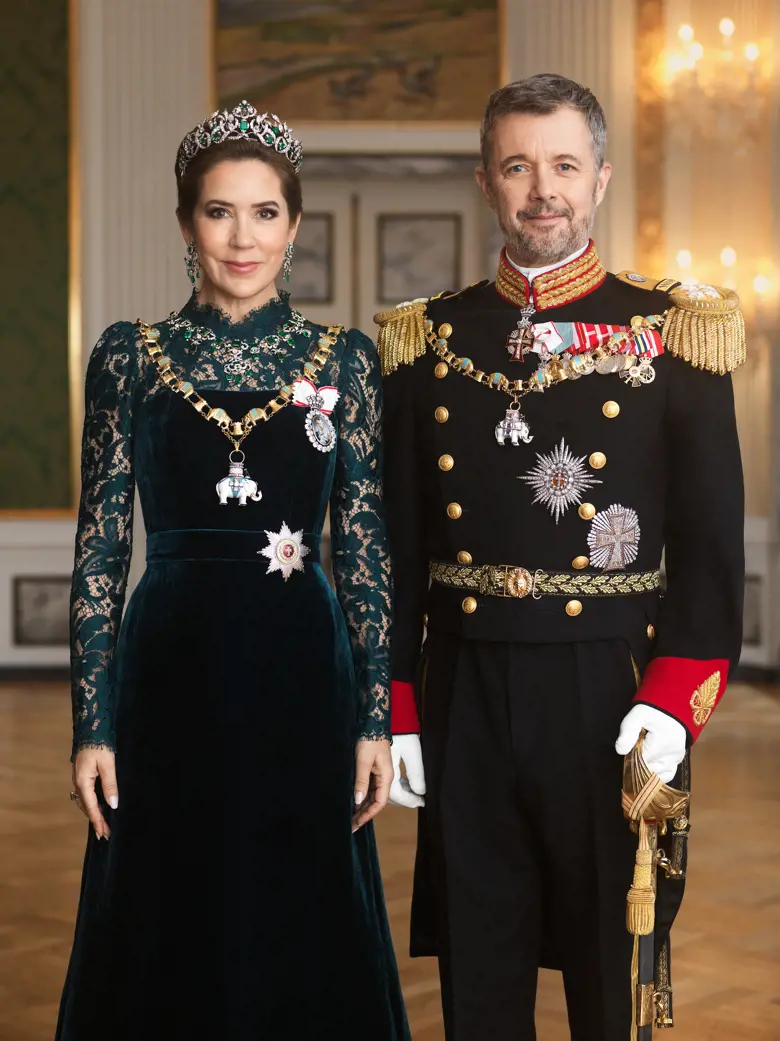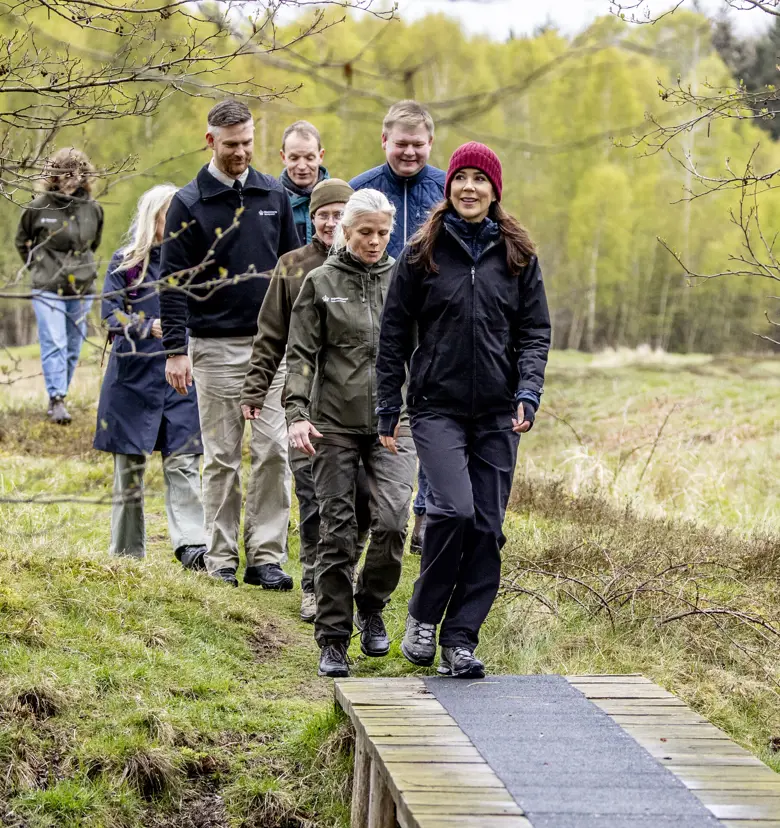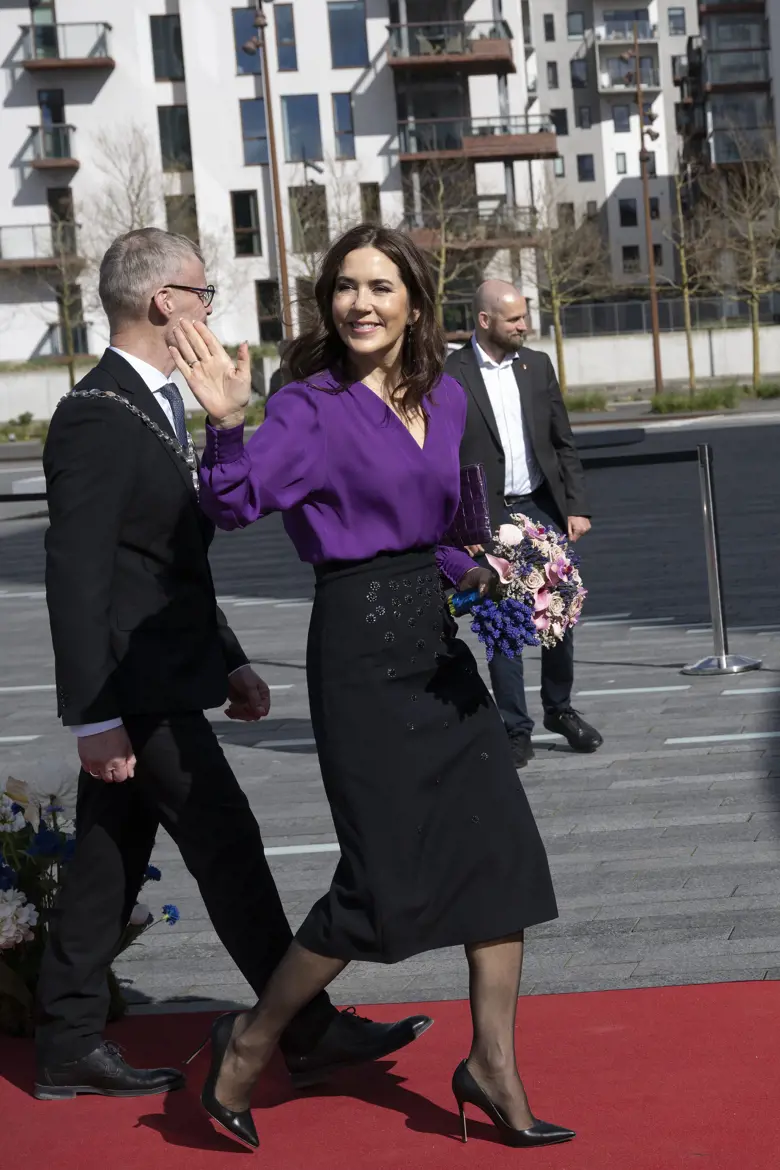H.K.H. Kronprinsessens tale ved åbning af Copenhagen Fashion Summit den 16. maj 2018
Offentliggjort den 16. maj 2018
Good morning,
In 1961, John F Kennedy held his famous ’moon shot’ speech. In that speech, he set the goal that by end of the decade the USA will have a man on the moon.
No-one knew at that time, if it was possible and if it was, how to achieve it.
But, when the goal was set, solutions had to be found.
And after 8 years, the goal was achieved – the first man set foot on the moon.
This is just one of many historical moments that tell us that when we strive to achieve together what seems impossible but with a clear goal in sight, then anything is possible.
The Fashion Industry has a goal; to transform the way we produce, market and consume fashion.
It is an ambitious and complex goal and it is absolutely essential that we achieve it.
Essential for people, planet and prosperity – our future.
And that is why Copenhagen Fashion Summit is such an important event and platform for accelerating the industry’s commitment to change.
Last year, I used my talking time to discuss that real and lasting change demands that the industry come together and design and develop a fashion industry that can overcome the challenges of today and gain from the opportunities of tomorrow.
I stated that reinventing the fashion industry would require collaboration like never seen before; between all actors, at levels of the industry and beyond ….. to join together in a shared mission.
And that getting to where we need and want to be would require leadership. Bold leadership at all levels; from governments to designers to manufactures.
And that is of course part of the solution. However, to really accelerate the industry’s commitment to change we need to implement more and broader solutions and actions - ‘what to do?’ and ‘how to do it?
And that is why Copenhagen Fashion Summit has grown again this year and now spans over two days. This expansion is a response to the industry’s call for greater and more tangible guidance in how to implement sustainable practices to safeguard future growth.
This call has come from those who want to act but, are overwhelmed by the magnitude and complexity of the challenge and as such haven’t initiated any action. And this call comes from those first-movers that say they lack solutions and collaborative structures needed to complete further transformation.
So what is pulse of the industry? The industry has awaited with expectation the new Pulse Report published by the Global Fashion Agenda and Boston Consulting Group. According to the report the health of the industry remains weak with only a six point improvement, from 32 to 38 (out of 100). This improvement has come almost entirely from small and medium companies in the mid-price segment.
For luxury players and giant companies – who are still leading the way – finding solutions for unresolved problems is becoming tougher and impact and returns are receding - and this has affected their contribution to improvement.
On a more positive note, of the executives polled, 57% reported that sustainability targets acted as a guiding principle for nearly every strategic decision they made; that is an increase of 23 percentage points from last year. I believe we can draw the conclusion that greater sustainability focus on the corporate agenda will translate to a stronger pulse in the long-term.
What I find particularly interesting and helpful is the report’s, Roadmap to Scale, which lays down a potential path for fashion brands; a suggestive framework with inspiration and guidance for how a company can embed sustainability deep within the core of the business regardless of size, price-positioning, or geography.
The industry’s existing solutions and business models, even under optimistic assumptions, will not deliver the impact needed to fully future-proof the industry. Fashion needs a deeper change to secure long-term growth and profitability – it needs new technologies and models that are only just beginning to emerge.
The Pulse Report also highlights this need; for the industry to innovate and invest jointly to target the unsolved challenges in the value chain with new solutions. It goes further to say that all players within the industry must join forces to create an ecosystem that supports transformational innovation and disruptive business models.
Companies no matter how large or resourceful cannot overcome such challenges alone. It will take a joint effort by the industry as a whole.
And joining together, in itself is no easy task:
- How does a company align its own strategy and mission with the mission of other key stakeholders and the industry as a whole?
- How can a company protect its creativity, ideas and profitability whilst sharing its good ideas and best practices for the common good of the industry?
- And how can brand value be protected when collaborating with the competition?
Collaboration is almost like a science in how to account for all interests to the satisfaction of all parties. And these few questions are part of the myriad of questions that must be answered before finding a collaborative structure to begin to work from.
Innovation is about creating new social and economic value and we are seeing some good innovation but, not nearly enough. We need to foster a stronger environment for innovation to thrive: where ‘trial and error’ is celebrated and ideas welcomed from bottom up and top down and from right to left. Where we close the generation gap and benefit from the voice of youth. And as we have just heard that is one powerful voice for change.
Yesterday I had the opportunity to visit the Innovation Forum: the Summit’s new, sustainable solutions platform.
And I was amazed by the passion of the exhibitors and the array of innovations that are actually out there or right around the corner; from fabrics and packaging to behavior-influencing technology, the variety of solutions at Innovation Forum ranges from cutting edge to tried and tested.
It was incredibly exciting to hear about innovations and materials developed in such alternative and sustainable ways. For example…
BioGlitz – is a company that produces plant-based biodegradable glitter, so its product does not harm plants. As opposed to regular glitter that is derived from petroleum-based plastic, which ultimately pollutes our environment, poisons our food supply and heats our oceans.
Frumat – is a company that produces apple leather made from apple peels.
And Piñatex which is a natural-based, non-woven material that is versatile, lightweight and durable, making it suitable for use across fashion and interior furnishings. It is made from pineapple leaf fibers, a by-product of the agriculture industry, so no extra land, water or pesticides are required to produce this raw material.
I encourage you all to explore the innovative solutions, large and small, that the Innovation Forum has to share. Solutions are in themselves part of the transformation and can help companies to define their focus and guide them toward more sustainability in the way their products are produced, marketed and consumed.
I am also very pleased that Global Fashion Agenda has planned over 300 business meetings between fashion brands and solution providers during the Summit to help ensure that words can be turned into action.
Another initiative in response to the industry’s request for guidance and a common industry focus is the introduction of The CEO Agenda which presents 7 sustainability priorities. This is a must read for everyone.
I’m extremely impressed by how the Global Fashion Agenda has managed to simplify with such clarity, the complexity and fragmentation that characterizes the industry, into core priorities for immediate implementation and transformational priorities for fundamental change.
This initiative really supports companies in taking action.
You probably all know of the 17 Sustainable Development Goals. This Global Agenda provides the framework for the world’s development through to 2030. It is a very ambitious agenda and it has been recognized that the private sector has a significant role to play in achieving it.
To realize the SDG’s it is estimated that the world will need to invest a staggering, 5-7 trillion US dollars annually – this is roughly 7-10% of the global annual GDP. Governments alone cannot reach this level of investment; therefore the private sector is vital to driving success.
Sustainable Development for people, planet and prosperity provides new opportunities for growth, but to truly capitalize on those opportunities it will require partnerships across continents, regions and countries and between the public and private sectors. It will require new business models and new ways of thinking – it will require designing new solutions that are both commercially viable, as well as delivering value to society.
The Global Goals will be a driving force for opening new markets and creating a better enabling environment for business. And as such, they present a wide spectrum of opportunities for visionary companies.
And by their very nature Fashion companies and designers are visionary.
The SDG’s are not just a framework for development they are also a framework for innovation and business opportunities. They can be an effective guide in the development of your sustainability strategies or be an important tool to align with your existing sustainability strategy.
17 goals and 169 targets seem overwhelming however, you will find that when you look into it, some of the goals are more core to your own sustainability efforts than others and these goals should be your focus.
Therefore, it’s important to understand and identify which of the goals are relevant to your business; is it goal 5 for Gender Equality or Goal 6 for Clean Water and Sanitation? Or a mixture of both? As a business you need to ask yourself; where can we and where do we have a responsibility to reduce our social and environmental footprint and where lies our opportunities for positive impact?
Less and less we are seeing businesses with a separate CSR strategy; today it is a more integrated approach - where an increased societal responsibility can also result in growth and increased profit for that business. There is a growing acceptance that it is “OK to do well, by doing good”.
We should see the enormous challenges facing the industry as an exciting moment in its development for the future. We all have a responsibility for our common future, it is not a responsibility we can choose to take, it is one we simply have.
My hope is that Global Fashion Agenda continues to serve as the platform for accelerating the necessary change and that Copenhagen Fashion Summit will continue to be the global platform for bringing forward the industry’s commitment to change.
What Eva Kruse and her team have been able to achieve until now – the movement they have created and stimulated and the insight they have provided and the guidance they have given - is truly remarkable. And I would say we wouldn’t be at the point we are at in the industry’s transformation, if not for their vision.
We must ensure that no recommendation, no policy guidance and no solution is developed without taking into full account the outcomes for social and environmental impact and the gains that can be derived from the industry’s transformation.
The goal of transformation is ambitious and complex – and can seem as unrealistic as landing on the moon in the 1960’s.
The Fashion Industry has set a goal to transform the way we produce, market and consume fashion. Now we must accelerate our efforts and keep that goal in sight. It will take time but, I believe that together we can achieve that goal and at the same time take another great step…. for humanity.



